Nswatugi Cave - rock art paintings
- If there is only time for you to visit one rock site in the Matobo National Park, this is probably the one to visit.
- Three iconic shaded polychrome giraffe are amongst the best in Zimbabwe.
- The paintings are amongst the most delightfully coloured in the Matobo National Park.
- There is a board at the car park site that gives comprehensive and useful information on the geology of the area, who the artists were, some ideas on dating the rock art and how the paint was made.
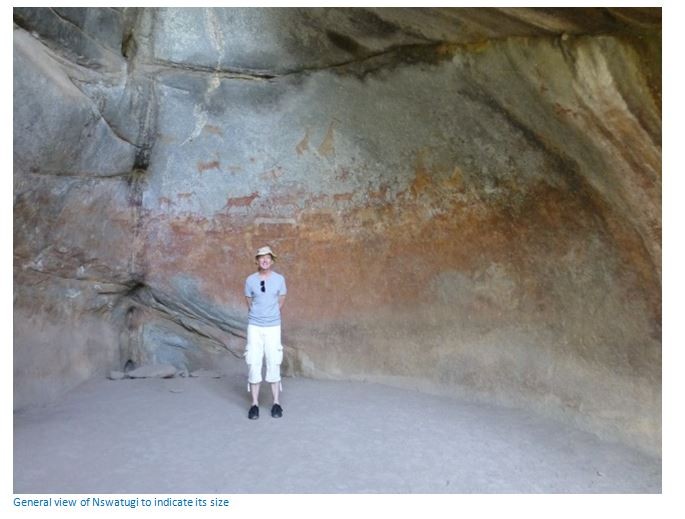
From the National Park Reception head towards Maleme Dam, 1.7 KM turn left at the junction facing the Dam and cross the wall, 3.7 KM reach road junction and turn right to go north. The signpost says 7 km but it is much better to stop at 1.6 KM where the signpost on the left indicates Nswatugi Cave and walk the path rather than driving the long way around to the Site car park on a track that is in very poor condition. The climb is quite short and easy along a well-marked path marked on the granite with green arrows.
GPS reference for car park: 20⁰32′07.58″S 28⁰28′30.39″E
GPS reference for Nswatugi sign post 20⁰32′11.17″S 28⁰28′34.05″E
The name Nswatugi is from the Karanga word 'svetuka' meaning “the place of jumping” as it is believed that Mwari / Mwali (God) jumped from his home at Njelele Mountain to Pomongwe Hill landing on the top of Nswatugi Hill where he left his footprint.

An iron-age granary from the 1890's manufacture once stood in the cave but has since been destroyed or fallen to pieces. Many Middle-Age and Late Stone-Age scrapers and points have been found on the floor during previous archaeological excavations and the cave was the type-site of the Rhodesian Wilton Industry (Later Stone-Age)
The cave itself is at the end of a narrow gulley with an entrance just 5.5. metres wide, but extends for about 14 metres into the hill. The paintings are mostly red to brown in colour; a giraffe and elephants in light claret, a white rain bull and three of the most beautiful polychrome giraffes to be found anywhere in the country.
Excavations were carried out within the cave in 1932 and then in 1975. The top two metres of ash contained Late Stone-Age scraper and point tools that dated between 6,500 and 10,000 years ago. A layer of sterile soil with no human artefacts separated the Late from the Middle Stone-Age layers. In the Middle Stone-Age layers werr found human remains more than 9,000 years old; these were the oldest then found in Zimbabwe.
San hunter-gatherers lived in the matobo Hills, their way of life governed by the seasons as they moved in a nomadic fashion; the men hunting wildlife such as reptiles, rock hyrax, tortoises, small antelope with traps and poisoned arrows; the women gathering berries, bulbs, fruit, nuts, roots, seeds and wild honey.

Comparison painting on the rightwas by C.K. Cooke
Peter Garlake writes that the cave is quite small, but the paintings are amongst the most varied, beautiful and colourful to be found in the Matobo Hills. Two large shaded polychrome giraffe dominate the frieze with below a camp scene of figures asleep in their karosses. Below are a line of six large kudu and a mass of figures including a zebra, three humans with their knees bent and upper bodies supported by their hands in a crouched position, others carrying weapons and lines of running hunters. the nine hunters in the lowest line are covered in white-coloured paint as body decoration.


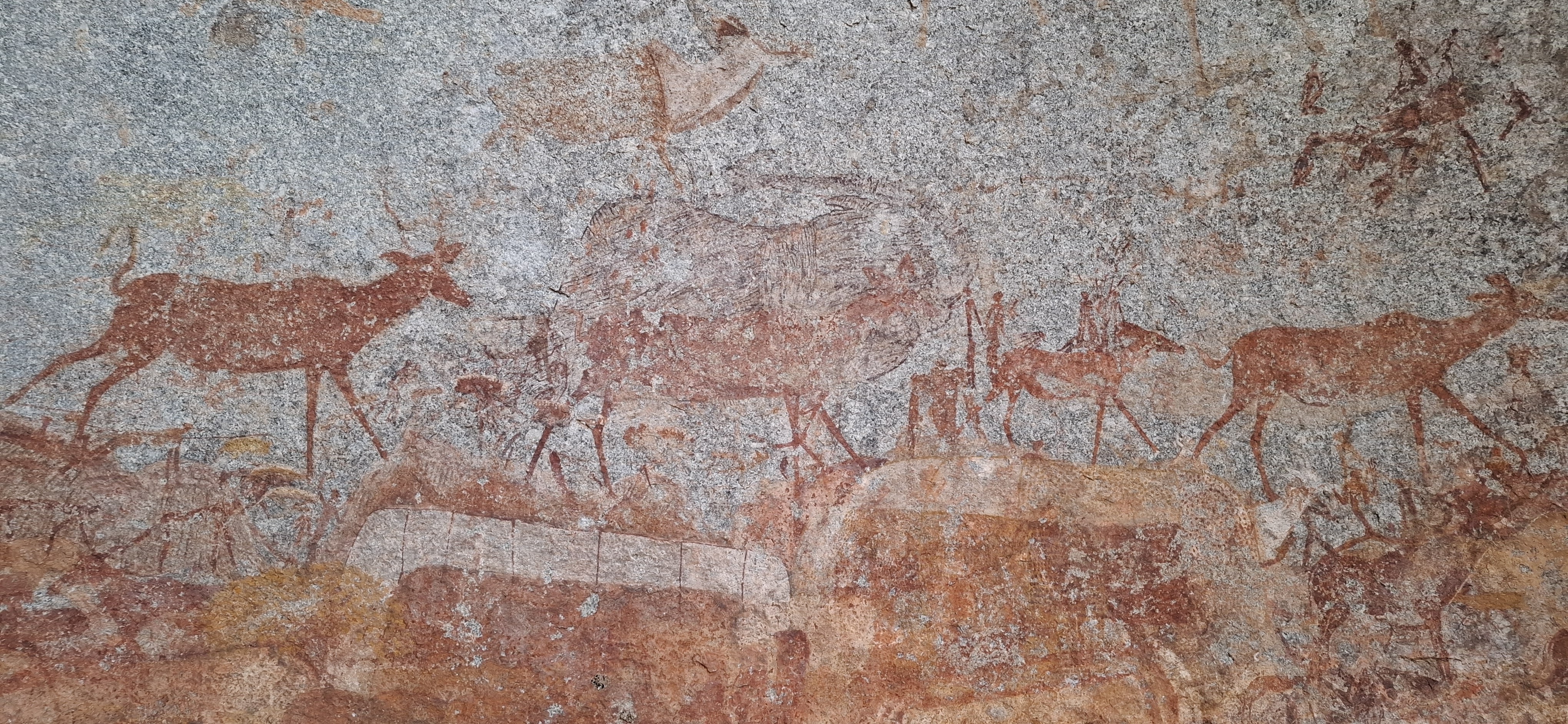
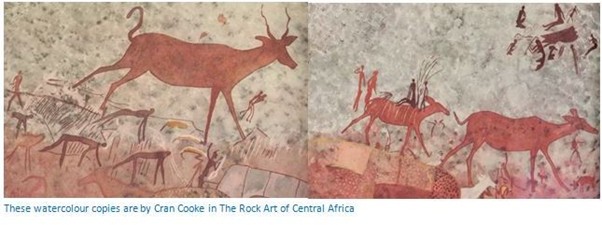
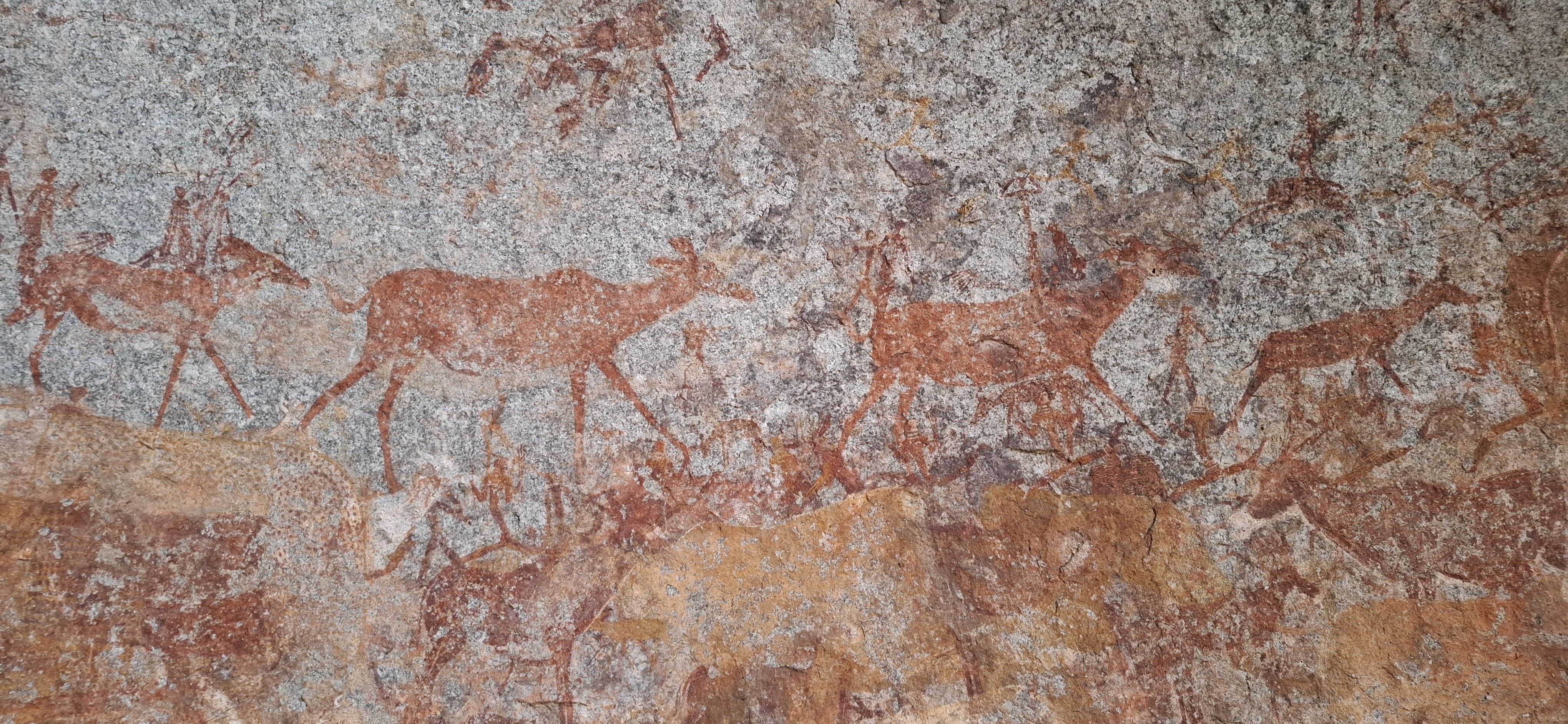
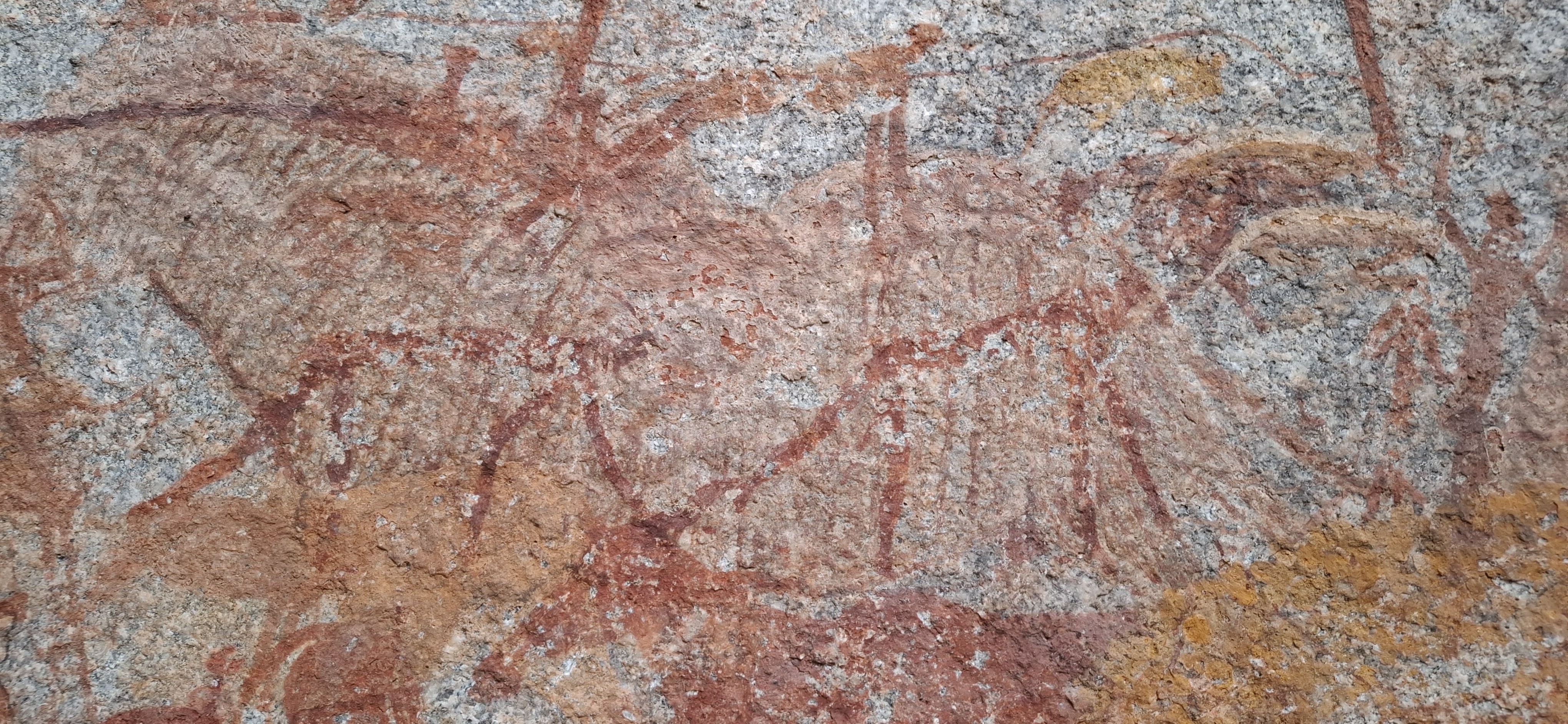
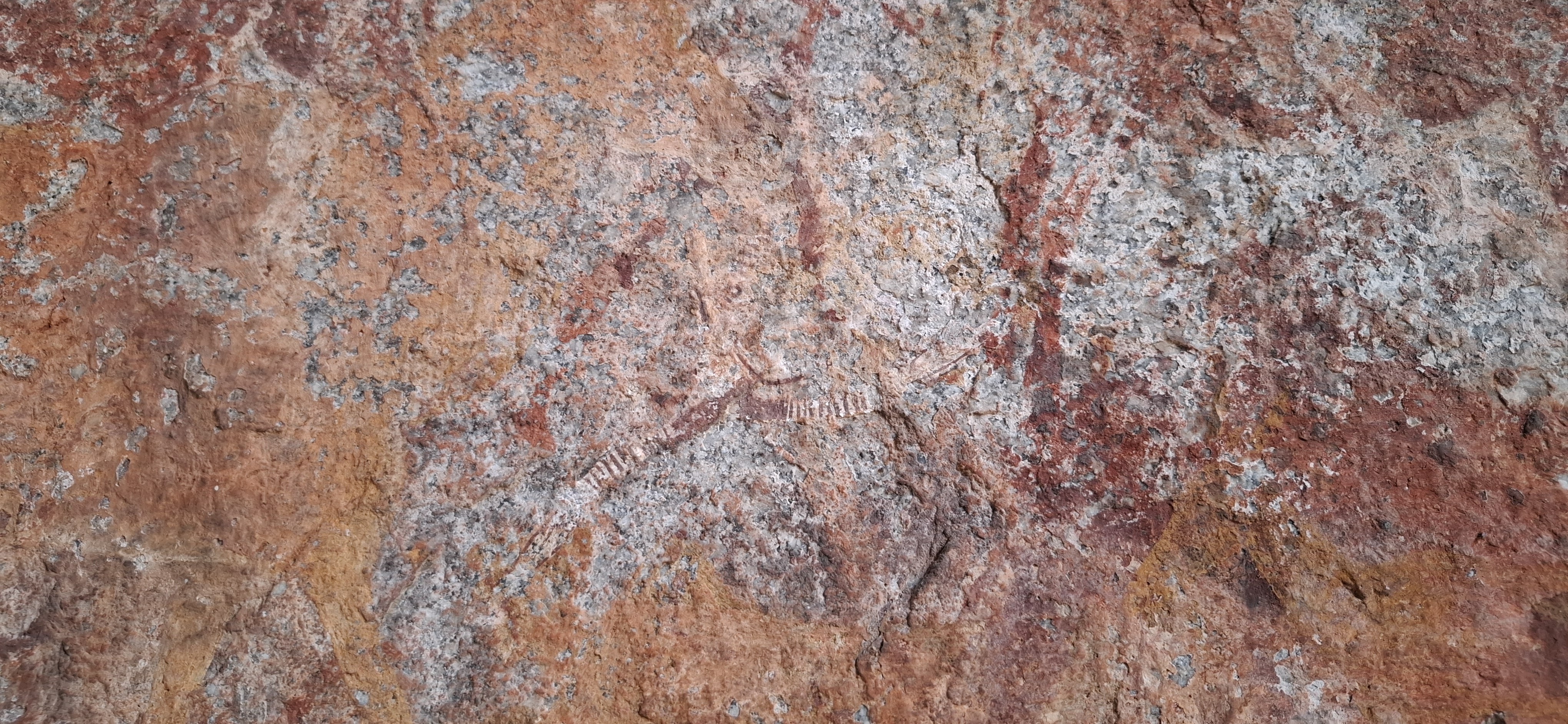
On the right side of the frieze there is another finely-drawn polychrome giraffe and a trotting zebra, underneath are three bichrome zebra. Below a small antelope lies recumbent, neck extended. Behind the zebra is another polychrome zebra and an eland with the remains of a third zebra.
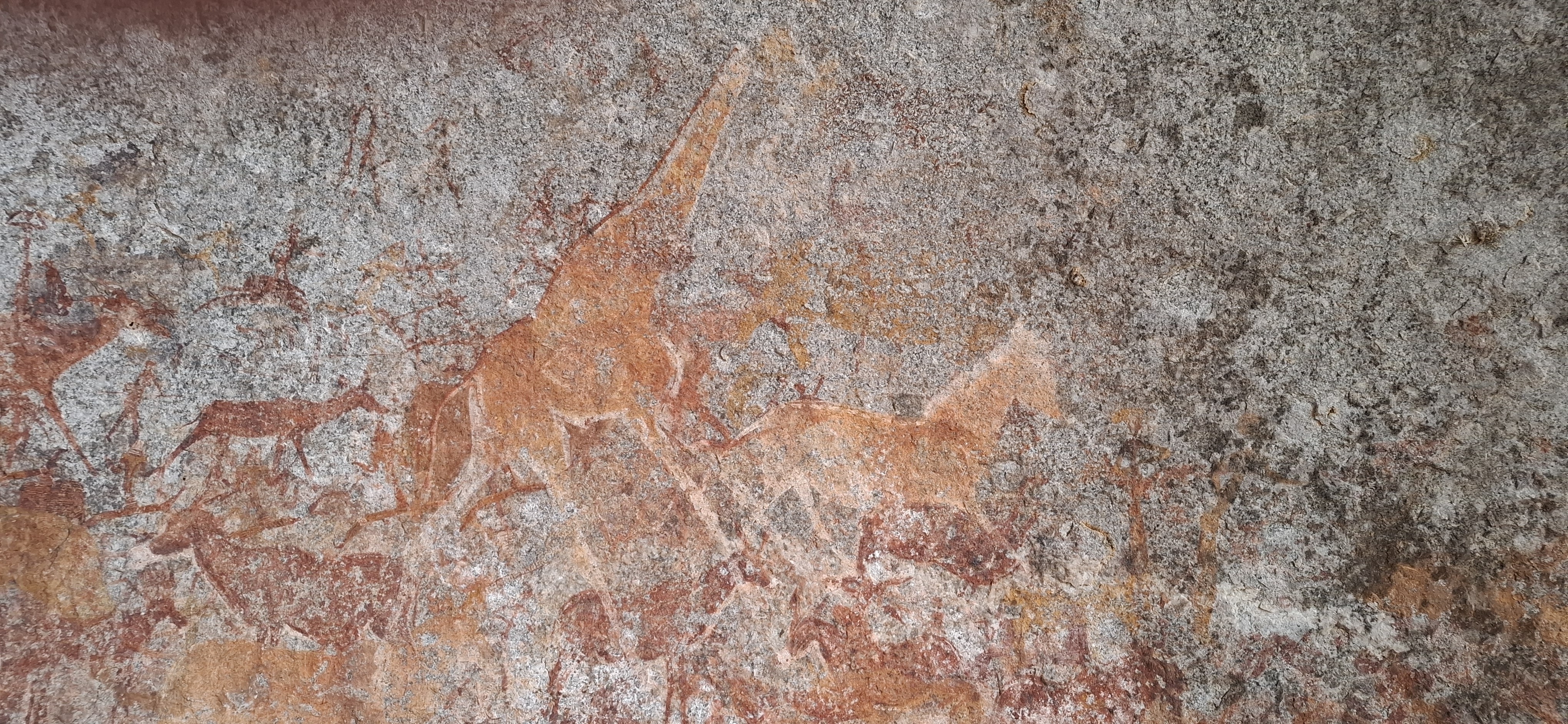
Below the main frieze are a number of ovoids in ochre and red with stippling and white caps. Low left are two shapes with multiple parallel lines in a semi-circle enclosing a lenticular-shaped object. There are fragments of stripling visible beneath.
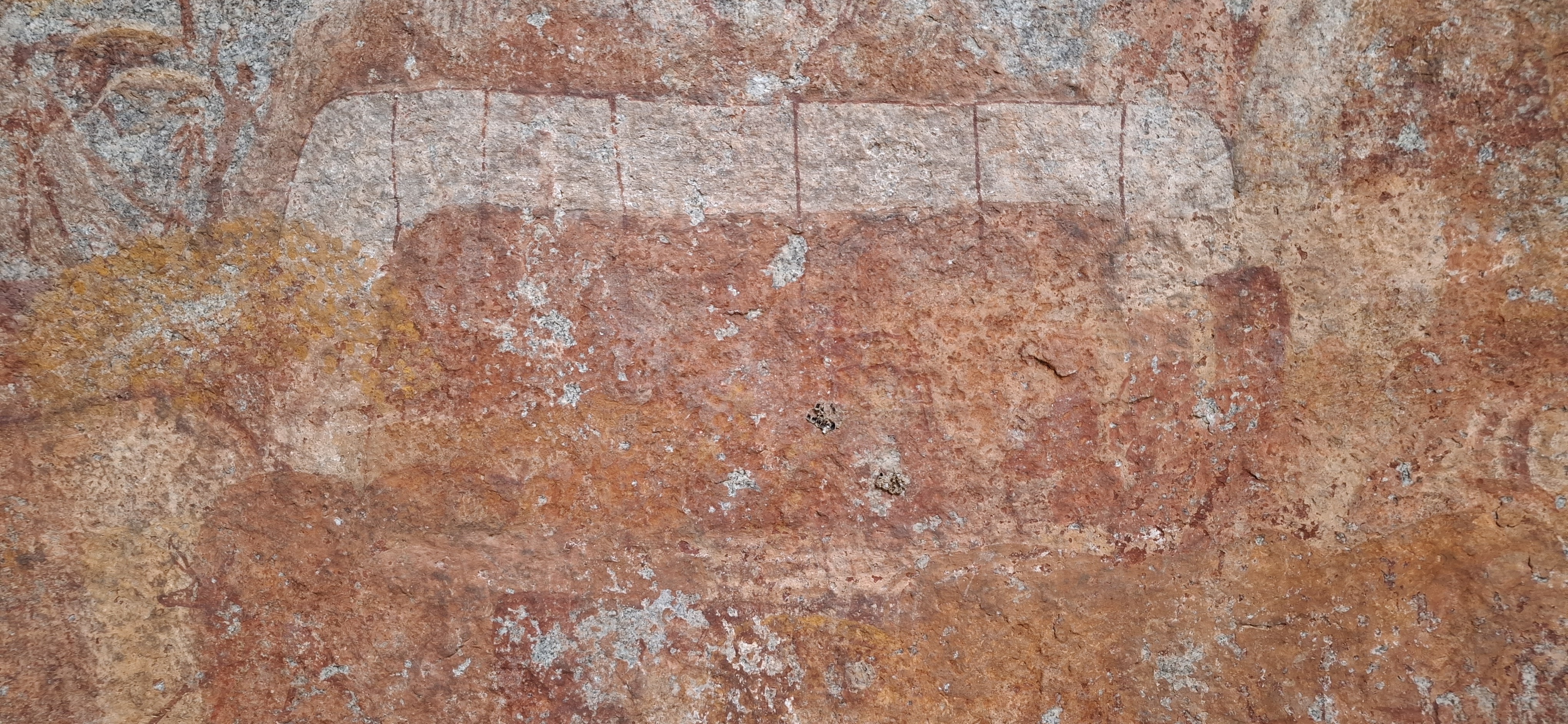
On the extreme right of the panel are outlines of a zebra and the head of a kudu cow and on the far left are two superb antelope. Further back in a recess are two ovoids, or formlings and a feline. At the front of the cave are a faded giraffe outline, four antelope and a sable head.
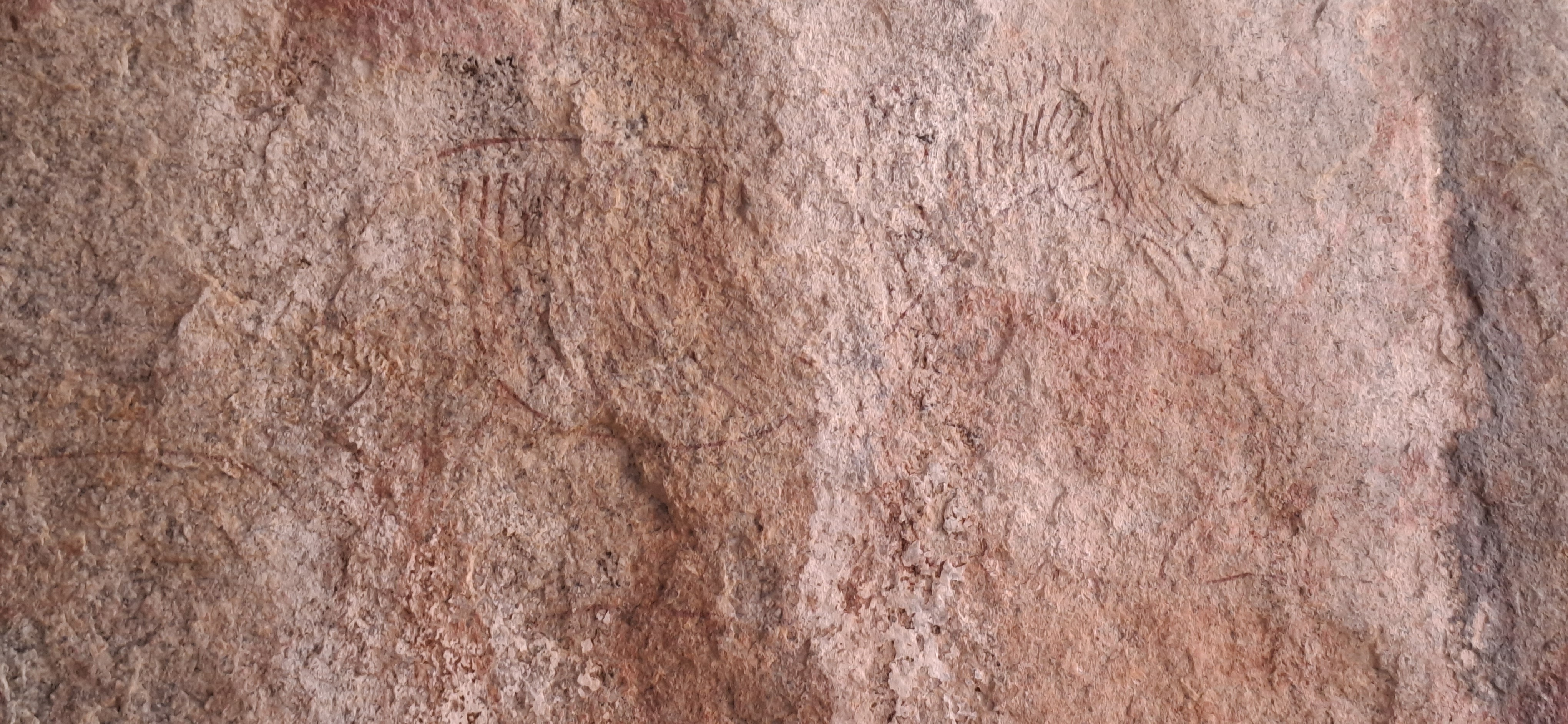
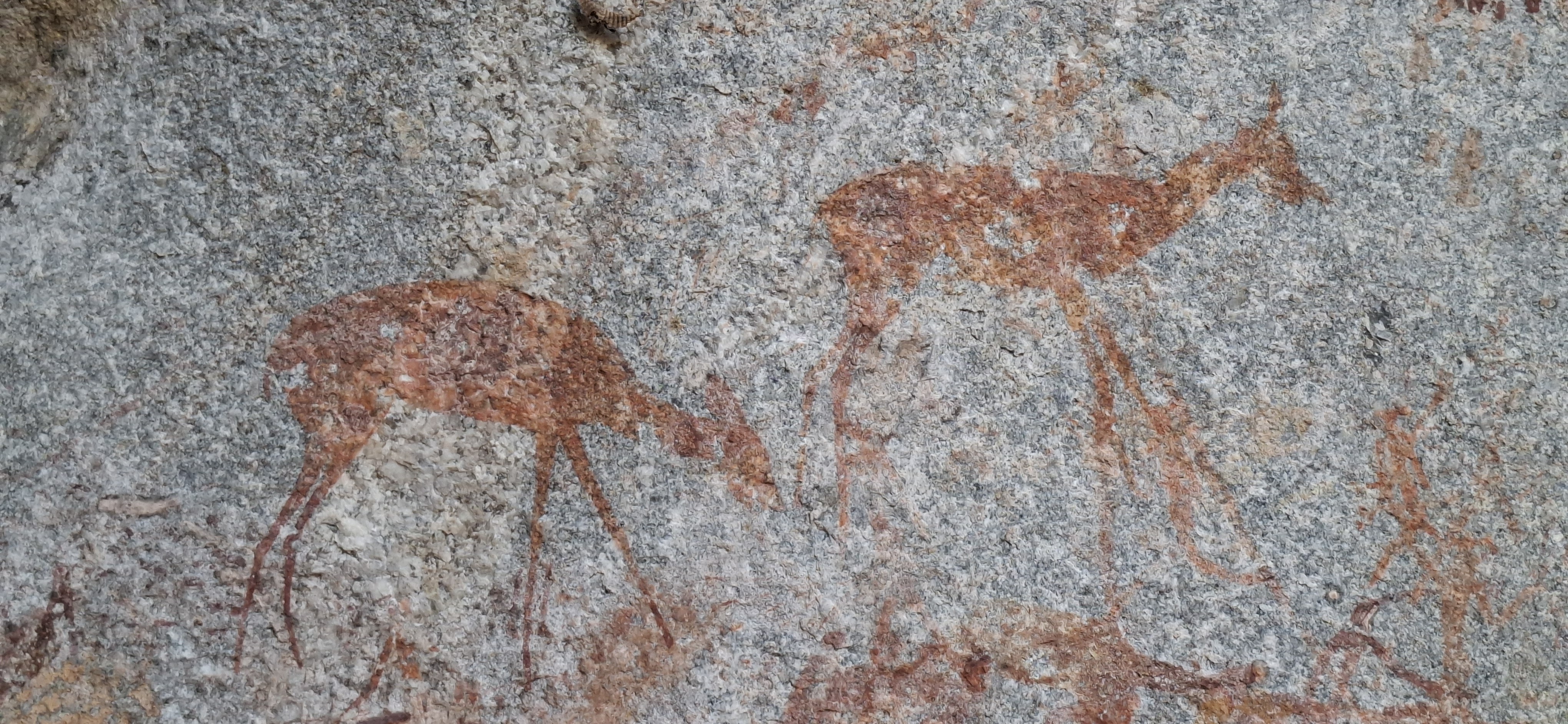
On the floor of the cave once stood a clay granary where the Matabele stored grain during the First Chimurenga of 1896 which has since fallen to pieces. The cave was first visited by Neville Jones and the first excavation was carried out in 1933 by Cran Cooke with another 1975 excavation led by Nick Walker. The upper layers revealed Iron-Age remains of pottery, ironwork and glass beads and below were revealed Middle and Late Stone-Age scrapers and points and a number of other implements of fine workmanship which became the type site for Wilton implements. A human skeleton found in the Middle Stone-Age levels is probably the oldest human remains found in Zimbabwe.
The painters were the hunter–gatherer ancestors of the modern day San people in Botswana who were forced to retreat to the more marginal lands of north western Botswana and the Kalahari with the arrival of Iron-Age pastoral farmers bringing with them sheep and goats and later cattle.
These large smooth-walled caves were formed by negative spheroidal weathering with erosion of the internal joints within the granite mass of the great smooth “whale backs,” or amadwalas; the opposite of the erosion through exfoliation on the dwalas themselves which is called positive spheroidal weathering, or more simply “onion skin peeling.”
References
C.K. Cooke. A Guide to the Rock Art of Rhodesia. National Museums and Monuments of Rhodesia 1974.
E. Goodall, C.K. Cooke, J. Desmond Clark. Editor R. Summers. Prehistoric Rock Art of the Federation of Rhodesia and Nyasaland. National Publications Trust. 1959
P. Garlake. The Painted Caves: An Introduction to the Prehistoric Art of Zimbabwe. Modus Publications (Pvt) Ltd, 1987
R.J. Fothergill. The Monuments of Southern Rhodesia. The Commission for the preservation of natural and Historical Monuments and Relics. 1953
